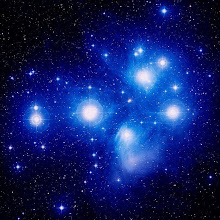
Last summer, a friend and I took two weeks to drive a 6,000-mile loop around the United States. We saw all sorts of terrain, from the rolling wooded hills of the Appalachians to the eroded badlands of the Dakotas to the majestic mountains of Montana and Wyoming. But there was one thing about the lay of the land that hit home above all else: corn is everywhere.
As I've mentioned in the past, I've been trying of late to educate myself about what I eat so that, when confronted with the many food options available to me, I can make healthier and environmentally friendlier choices. In the process, I've continued to learn quite a bit about the food industry and its role in our country's economic, medical, political, and environmental history. I regret to report that with every new article or book I read, and with every documentary film or television program I see on the subject, the picture only gets worse. Still, the fact that food production is even a topic of discussion at all these days gives me some semblance of hope. To that end, I wanted to give kudos to a film I recently saw that deftly gets to the root of one of the biggest problems with what we eat today: the fact that almost everything we consume comes in some way from industrial corn.
I first learned about this idea when reading The Omnivore's Dilemma, in which author Michael Pollan describes (among other things) just how ubiquitous the giant grass Zea mays has become in our food system. And it certainly hit home last summer when I experienced for the first time what thousands of miles of corn and more corn really looks and feels like. But the 2007 documentary King Corn breaks the story down even further, bringing viewers not only into the homes and offices of the people who produce all this grain and the livestock that feed on it, but into the lives of some of the people, far removed from the corn belt, who've been affected by our glut of the yellow stuff.
The film starts out with two recent college graduates, Ian and Curtis, undergoing a chemical analysis of their hair. The results indicate that the majority of the carbon in their bodies originates from corn; you are what you eat, indeed! So the duo decides to take a year out of their lives, move to a farming town in central Iowa, and try to find out how this came to be. To understand the process, they plant one acre of corn on a small patch of a willing farmer's land and interview everyone who'll talk about the life of their corn, from its planting to its harvest to the various channels it may go through after that.
One of the reasons I really liked this film is that it shows you the state of the corn industry without being preachy: This is where we're at, this is how we got here, and we'll let you draw your own conclusions. As you can imagine, there was quite a bit of watching the grass grow during the making of the film, so aside from talking to the locals and playing a lot of wiffleball, Ian and Curtis also took some time to create fun stop-motion animations as a way to explain the basic economic and political trends behind the corn industry in the United States. The film definitely misses an opportunity to discuss some of the major environmental effects that farms have had on the country since World War II. But I'd say that's probably one of the reasons why the movie doesn't feel (as others I've seen have) as though you're being clubbed over the head by an insurmountable sensation of doom and gloom.
In any case, I highly recommend putting King Corn on your Netflix queue or going out and buying it on iTunes or DVD. There are no concrete solutions offered here other than being aware of what you're eating and of how the government plays a major role in keeping the status quo. But if understanding the problem is the first step in solving it, then this film should serve as an entertaining primer. ∞

I just added it to my instant queue; thanks for the tip!
ReplyDelete